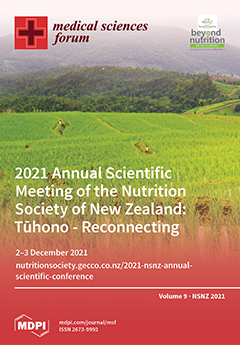Sleep deprivation compromises the cognitive performance of military personnel, jeopardising operational safety. Sleep deprivation-related performance deficits coincide with decreased glucose metabolism in associated brain regions, suggesting the potential utility of a ketogenic diet (KD) to provide an alternative fuel source during sleep deprivation. A randomised, cross-over trial was conducted with military personnel. Participants ingested an iso-energetic KD (CHO, ~25 g⋅day
−1) or a carbohydrate (CHO)-based diet (CHO, ~285 g⋅day
−1) for 14 days, immediately followed by 36 h of wakefulness and separated by a 12-day washout period. Cognitive performance (5-minute Psychomotor Vigilance Task; PVT), mood, subjective sleepiness, capillary blood glucose and D-β-hydroxybutyrate (D-βHB) were measured every 2 h. Linear mixed models tested the interaction and main effects of diet, period (six 6-hourly bins), and test time (1–3) within periods. D-βHB was higher in the KD than the CHO diet (+0.75 to +1.45 mM;
p < 0.001), whilst glucose was lower (−0.26 to −1.16 mM;
p < 0.01). The KD improved performance for all PVT variables (lapses, mean reciprocal reaction time (RT), slowest 10% RT and fastest 10% RT) (
p < 0.05), mood (
p = 0.001) and sleepiness (
p < 0.001) compared with the CHO diet. Sleep deprivation-related deficits independent of diet were found for lapses, mean reciprocal RT, slowest 10% RT, mood and subjective sleepiness (all
p < 0.01). Circadian effects were also observed independent of diet; fastest 10% RT was slower in periods 4 and 5 (0130–1330) compared with periods 1, 2 and 3 (0730–0130), but was faster in period 6 (1330–1930) compared with period 4 (all
p < 0.01); and mood declined and sleepiness increased from period 1 (0730–1330) to period 4 (0130–0730) (
p < 0.001), but stabilised across periods 4, 5 and 6 (0130–1830). The KD appeared to improve cognitive performance, mood and sleepiness during 36 h of extended wakefulness compared with the CHO-based diet. This suggests the KD could be considered for military operations when sleep deprivation is anticipated.
Full article



